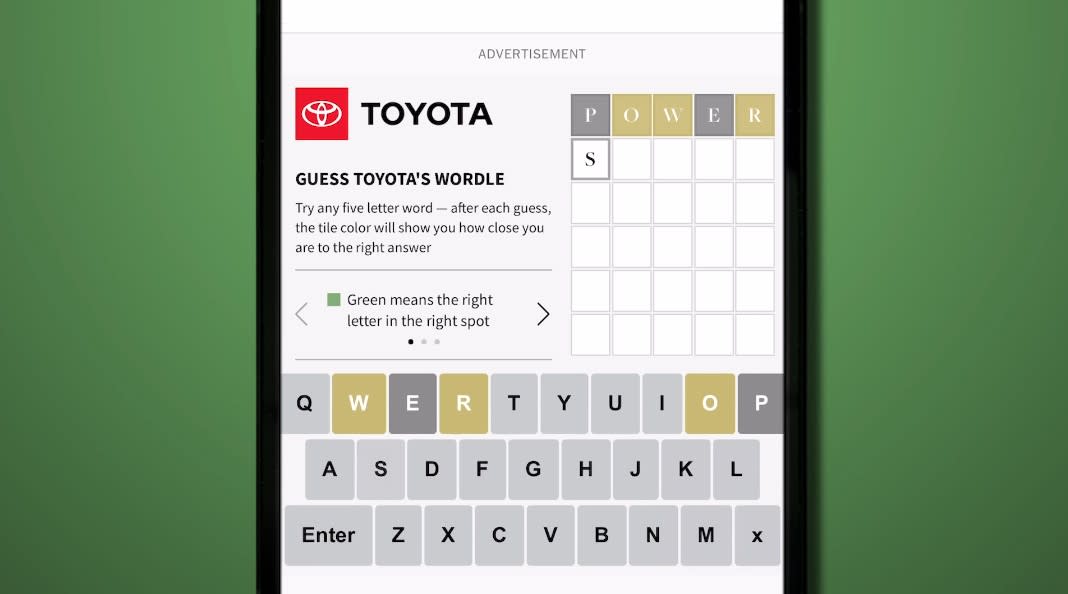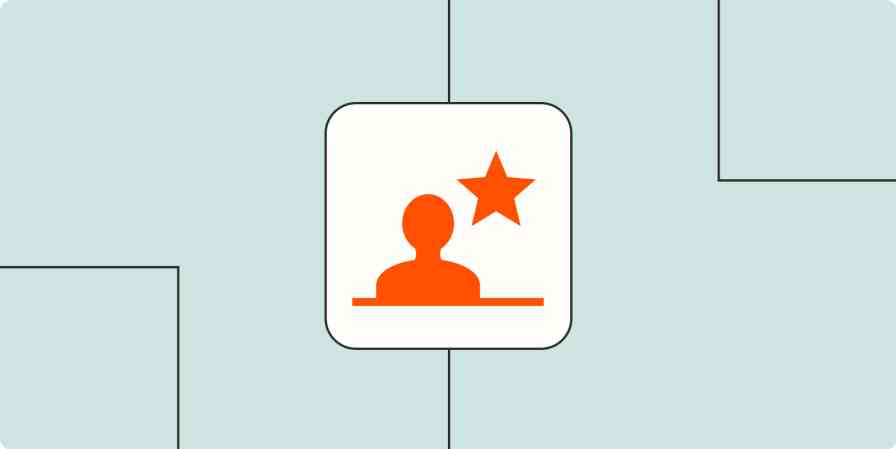Consumers have an uneasy relationship with ads. Ads are annoying, no question. But at the same time, people love free stuff—and advertising either subsidizes content or makes it entirely free. Generally, the more intrusive an ad is, the less it's tolerated by viewers.
Native ads are an attempt to have it both ways: they're designed to reduce the intrusiveness of ads while continuing to subsidize content. And some forms of native advertising, like sponsored content, also allow advertisers to borrow the credibility of the publications they partner with.
To illustrate how brands are engaging with native ads, I've pulled together a range of native advertising examples I found in the wild.
First, though, here's a rundown on what native ads are—and why they're so effective.
What is native advertising?
Native advertising is when ads fit (nearly) unnoticeably into the context in which they're placed. They look and feel like the publication they're on—in one way or another. Usually, the only giveaway that the content is a paid promotion is a small label that says "Ad" or "Sponsored by."
Native advertising can include many formats:
Programmatic ads
Articles and in-depth storytelling
Video and audio content
Surveys and data visualization
Digital tools, games, and experiences
Let's take a look at the first two, just to add some color.
Programmatic native advertising
You might have seen native ads that look something like this.

This is an example of programmatic native advertising, which is run by ad platforms like Outbrain and Taboola and helps advertisers inject their content natively at scale across the web. This format tends to favor sensationalism to drive clicks; out of curiosity, I clicked the above "Flight Attendants Say Not to Wear Shorts When Traveling For This Reason" ad, only to find an article full of standard travel tips that never addressed whether or not to wear shorts. (I guess we'll never know.)
But even though these tend to be the grabbiest version, native advertising is more than just programmatic ads.
Sponsored content
Sponsored content is a form of native advertising in which brands work closely with publications to create something that will engage their target audience. It often looks something like this partnership between ServiceNow, a software company, and The Atlantic.
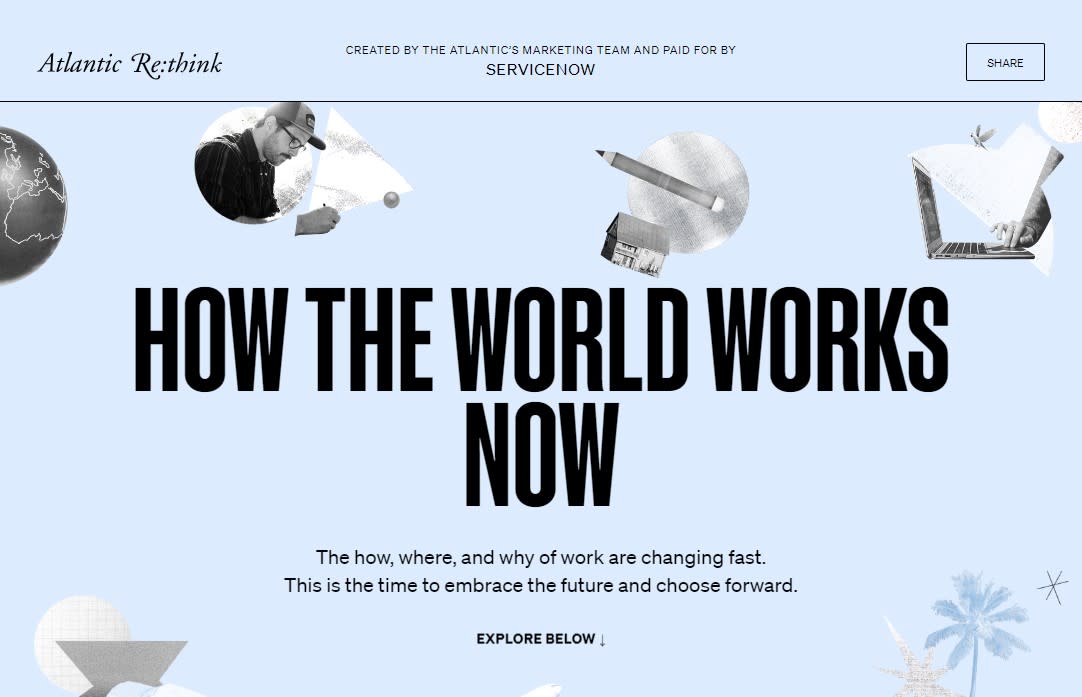
It almost looks like it's a regular piece from The Atlantic, but it's not—it's paid for by ServiceNow. It's an ad.
Whatever your approach to native advertising, the "Sponsored" disclaimer is a must. The U.S. Federal Trade Commission has native advertising firmly on its radar, and has laid out guidelines to prevent deceptive advertising and what it calls "door openers" that use misleading information to trick consumers into clicking on an ad.
So, why choose native ads over traditional ads? Consumers like them better than many other forms of digital advertising, and they're also more effective: one study showed that native ads generate 53% higher click-through rates than display ads. Even if that's an inflated number, it's still pretty promising.
11 native advertising examples to learn from
From programmatic ads to sponsored content in The Washington Post, native advertising comes in a wide range of formats. Here are some examples for inspiration on your next campaign.
1. Buzzfeed's programmatic ads
BuzzFeed News presents programmatic native ads at the bottom of nearly every page on its site. The native ads below—one provoking financial urgency, the other stoking curiosity—are a good example of the content that tends to work well in this context.

When you click these ads, you're taken to an invitation to watch a financial presentation (for the first one) and an affiliate site for fancy knives (for the second).
A word of warning: the clickbaitiness of programmatic advertising can feel kind of sleazy. If you decide to spring for it, be sure it won't harm your brand's reputation.
2. Business Insider's programmatic ads
I found Business Insider's programmatic ads more seamless than BuzzFeed's. Rather than a list of recommended articles from Business Insider (BI)—and then 100% native ads—it intersperses them.
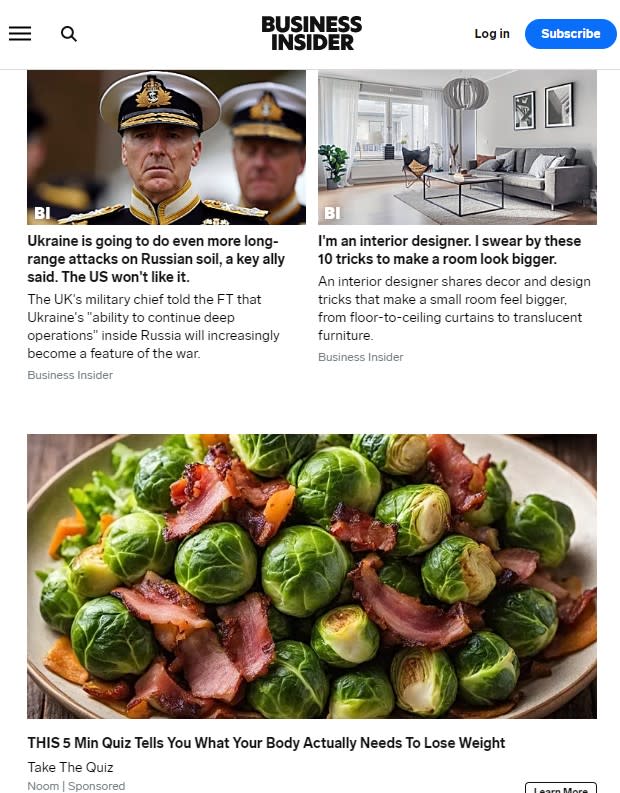
After a couple of BI article recommendations, you'll see a native ad followed by more BI article recommendations. This varied rhythm does a good job of making the native ad content feel like it belongs in the feed—and makes users more likely to click. But again: the goal here isn't to trick people; it's to make them want to engage. So tread lightly.
3. Korean Air and BBC Travel
Korean Air worked with BBC Storyworks, the branded content arm of the BBC, to create a sponsored content campaign focused on Korean culture. The resulting BBC Travel content hub includes stories on well-known Korean cultural exports like Taekwondo, kimchi, and K-pop, as well as lesser-known phenomena like Seoul's dog-friendly cafes and the award-winning baguettes of one Korean bakery.

The campaign gave Korean Air a significant boost in brand perception. One reason these stories work well is because they aren't overtly promotional. Most are focused on Korea as a travel destination, rather than on Korean Air in particular (though there are a couple of stories praising the quality of Korean Air's inflight dining).
4. The Macallan and CNN
CNN's in-house brand studio partnered with The Macallan, a scotch whiskey brand, to create a content hub with articles and short documentary-style films. Each piece of content focuses on The Macallan-inspired collaborations with artists, photojournalists, and musicians.
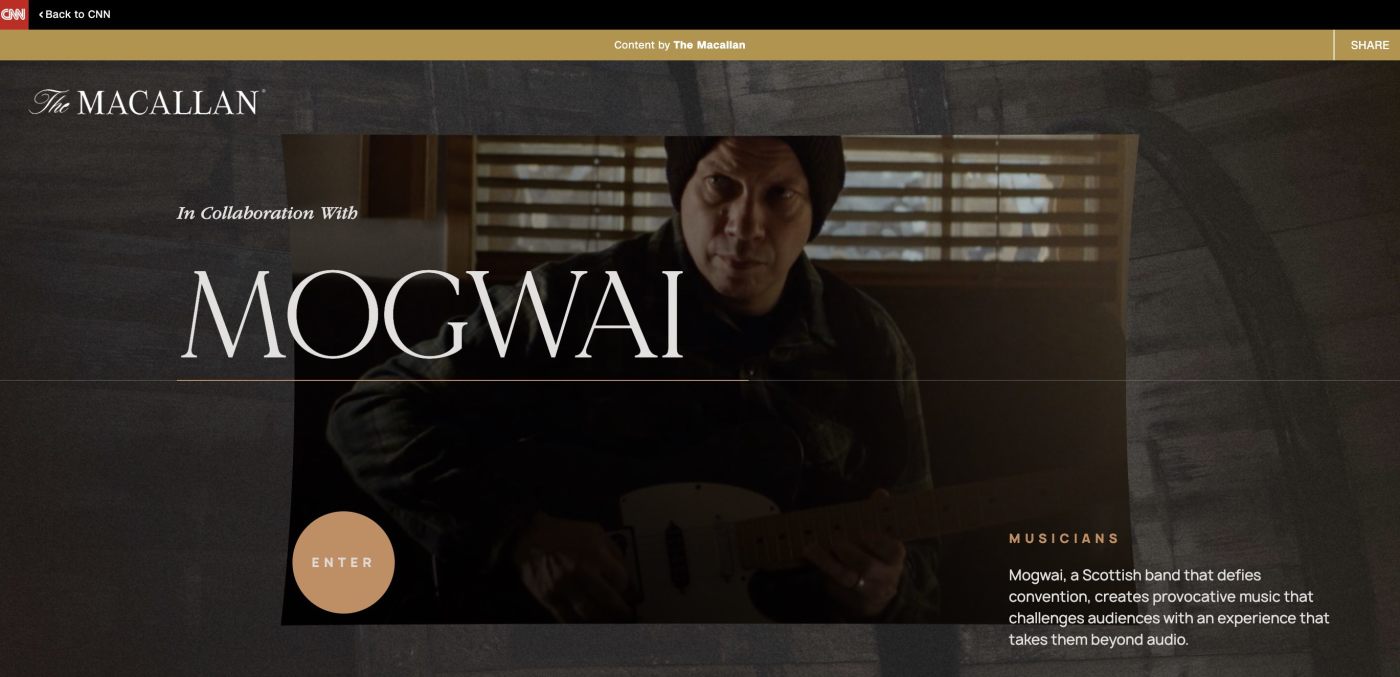
Collaborating with a well-known publication gives brands exposure to their audience on multiple channels; sometimes the sponsored content agreement can include a commitment for the publication to proactively drive traffic. In this case, CNN promoted The Macallan's content to segments of its audience on Instagram Stories and Facebook.
5. Atlassian and Forbes
Atlassian, a software company, orchestrated a three-way collaboration for this piece of native content. First, it worked with Forrester, a research company, to commission a survey of 750 executives, asking each of them a series of questions about collaboration. Then, it worked with the Forbes Brand Voice team to publish the results.
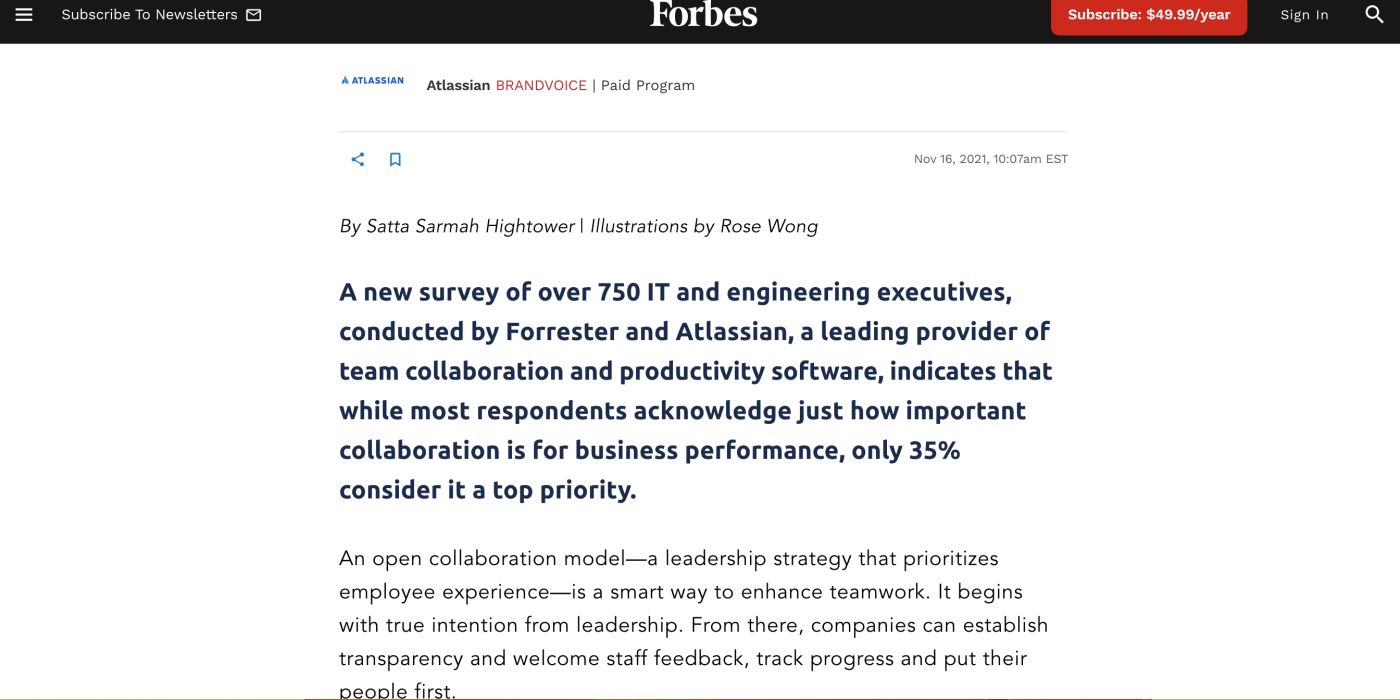
The final product—a sponsored article—is strongly influenced by Atlassian's perspective and includes rather dry soundbites from its C-suite executives. But it works anyway because of its original survey data; it's also attractive and fun to skim through, with custom animations illustrating each of the survey's conclusions.
6. Duolingo's fake reality TV show on Peacock
On April Fool's Day 2023, users of the Peacock streaming app were presented with a trailer for a (fake) Duolingo-sponsored reality TV show called Love Language in which—fittingly for a collaboration with a language-learning app—none of the contestants could speak the same language. Clever viewers quickly figured out that it was all a joke, but the trailer generated serious buzz and drove thousands of free trial signups for Duolingo.
Here's why this was a native advertising coup: rather than being presented as an ad, the trailer for Duolingo's prank show showed up in the normal Peacock content feed. As a result, not only did it avoid disrupting anyone's viewing experience—it also went viral and delighted users.
7. Sherwin-Williams and Apartment Therapy
If I asked you to name a brand that's mastered native advertising, your first guess might not be Sherwin-Williams, a paint company founded over 150 years ago. But Sherwin-Williams's partnership with Apartment Therapy, a home decor company, is a lesson on how to do native ads right. Sherwin-Williams sponsors a unique color-based search engine on Apartment Therapy's website that helps you discover room designs you might like.
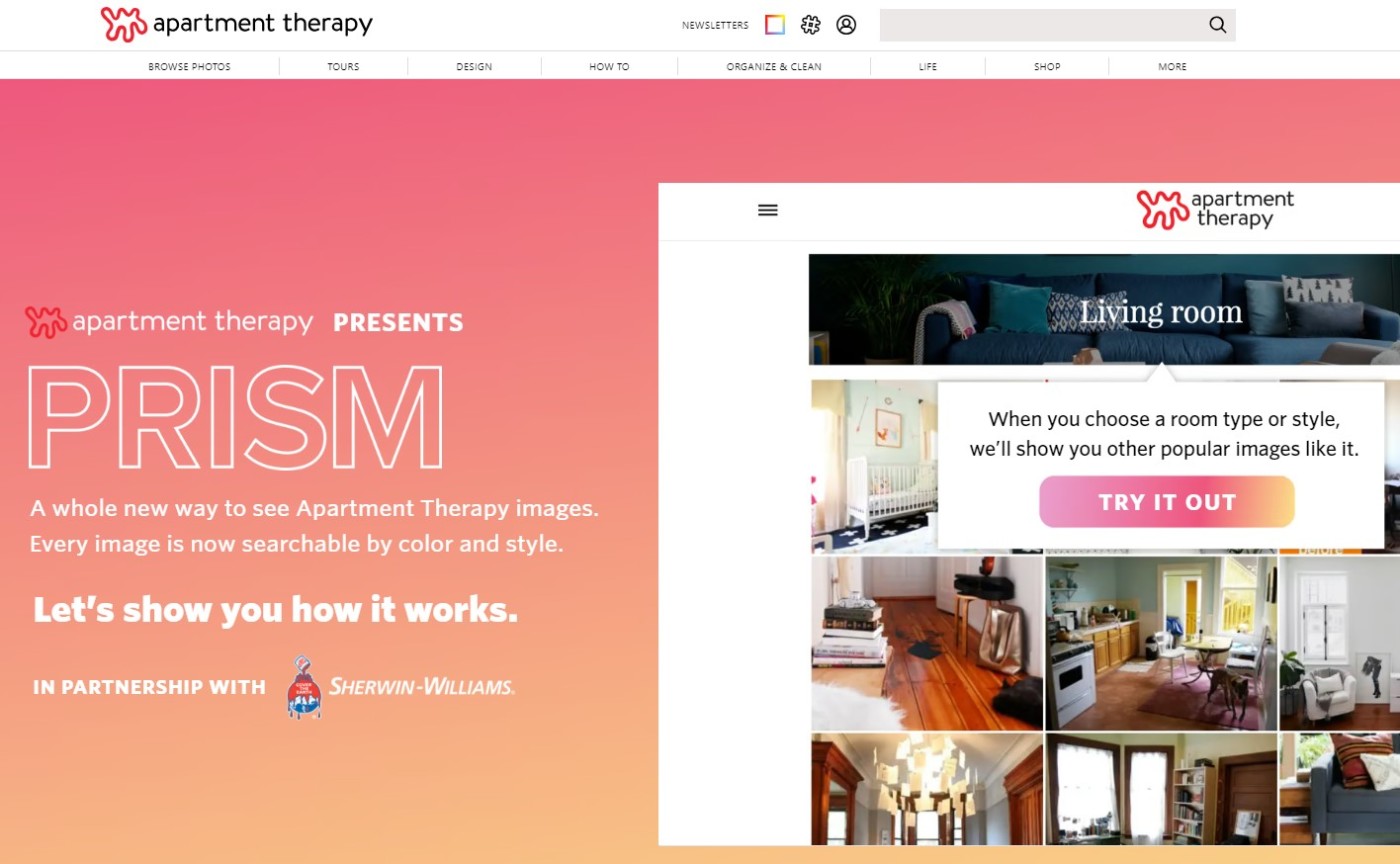
Interactive tools like this are a powerful sponsored content format because users come back to them again and again (as long as they're useful). This native content example is an all-around win: Apartment Therapy's users get a free, useful tool, and Sherwin-Williams gets to be the first paint brand users think of after finding an inspiring room design.
8. Vanguard and The Washington Post
Vanguard worked with The Washington Post to create sponsored content that felt at home on the newspaper's website. The content, which consists of interviews with financial advisors, was created by Vanguard and later assembled by The Washington Post's branded content team.
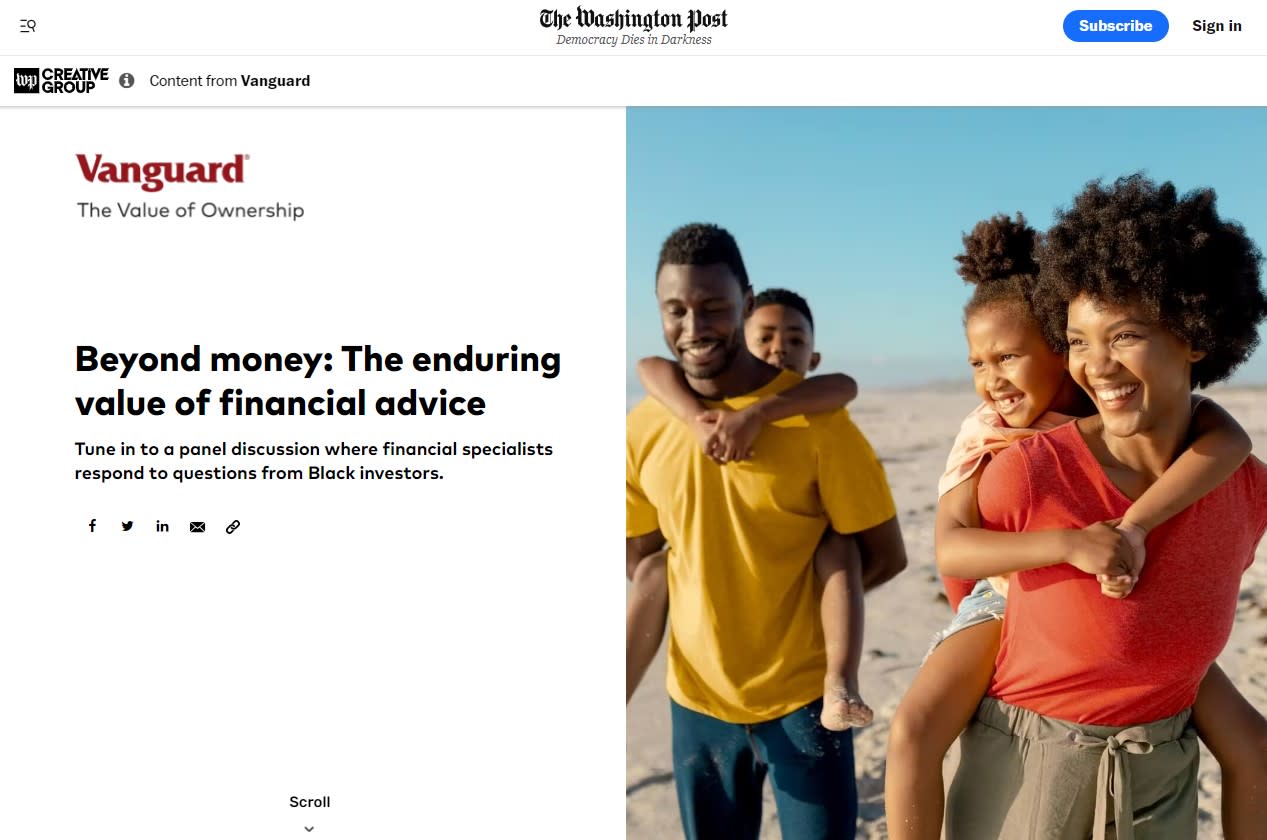
While the subject—financial advice—is fairly dry, the magic is in the presentation: The Washington Post transformed the content into a full interactive multimedia experience, including dynamic photos, live reader polls, and audio excerpts that make it feel like a real panel interview.
9. Toyota and Wordle
Wordle became an absolute phenomenon after its release in late 2021, accumulating millions of players in just a few months. So it should come as no surprise that advertisers wanted to get in on the action: Toyota partnered with Wordle to reveal the name of the new car it was releasing in 2023.
Toyota tapped into Wordle's highly educated and engaged audience—the average time-in-game was a minute and a half—and 97% of users successfully guessed the name of Toyota's new model ("Crown").
10. Hyundai and National Geographic
National Geographic's brand is built on adventure and the great outdoors, so it makes sense that Hyundai would tap into that passion for its native content campaign.
To do that, Hyundai created Augmented Reality (AR) experiences in three U.S. national parks: Great Smoky Mountains National Park, Yosemite National Park, and Zion National Park. The result, dubbed Outside Academy, allows National Geographic's audience to experience those national parks immersively from the comfort of their homes.
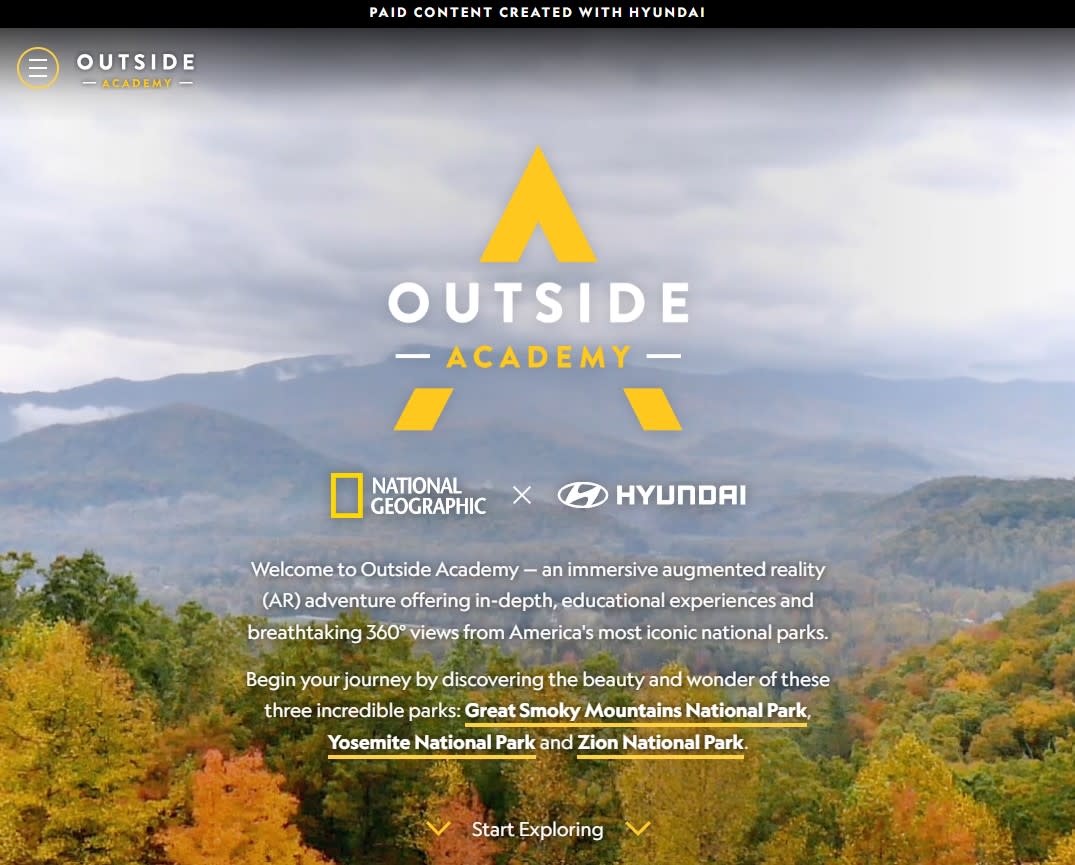
Hyundai's branding appears subtly throughout the experience, most cleverly in the form of Hyundai vehicles parked nonchalantly nearby as you admire virtual views of Yosemite.
11. Nike Run Club and Spotify
While this isn't technically native advertising—since brands don't have to pay Spotify to host playlists—it's too fascinating not to include here.
Nike Run Club is a free app that encourages runners, and its companion Spotify playlist (which has 1.2 million followers) serves to motivate runners and keep them engaging with Nike Run Club. The hour's worth of songs on the playlist is updated regularly, but each song has one thing in common: it's punchy enough to keep you running.
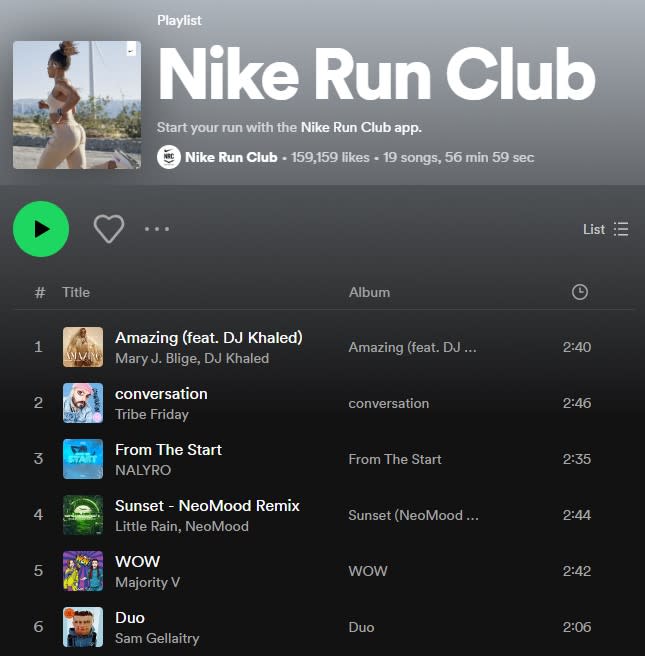
You might be surprised at the brands that have made waves with Spotify playlists: not only obvious ones like Starbucks and Nike, but premium brands like W Hotels and Gucci. It won't work for everyone, but it might work for you if your brand is aligned with music in any way.
Automate your ad campaigns
Keeping track of your ad campaigns manually gets complicated. To help, you can use Zapier to connect your ad platforms with the rest of your apps. You'll be able to centralize your analytics, streamline your leads—and figure out what's working (and what's not) much faster.
Learn how Zapier can help you optimize your ads—and the rest of your marketing workflows—or get started with one of these pre-made templates.
Send weekly Verizon Media Native Ads reports via Gmail
Create Google Analytics measurements from new Google Sheets spreadsheet rows
Log Google Ads offline conversions from new rows in Google Sheets
Zapier is the leader in workflow automation—integrating with 6,000+ apps from partners like Google, Salesforce, and Microsoft. Use interfaces, data tables, and logic to build secure, automated systems for your business-critical workflows across your organization's technology stack. Learn more.
Related reading:

